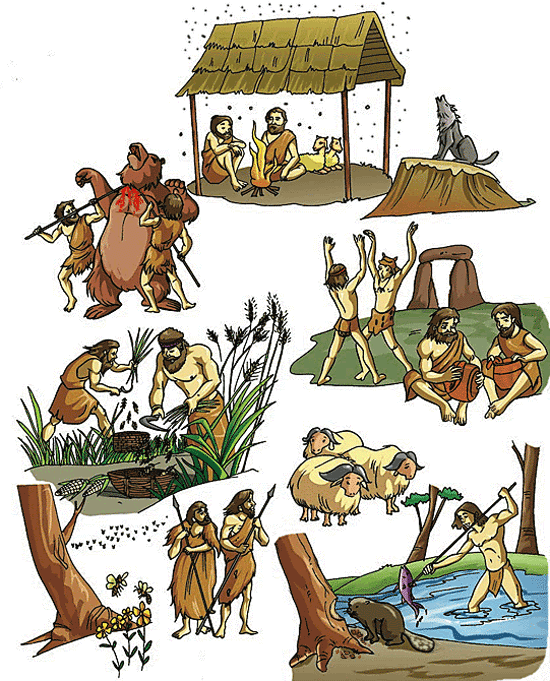English and Its Historical Development, Part 01
(Indo-European is believed to be the origin of many modern languages)
Many Indo-European words are considered to have been the origins of English and other languages starting before 2500 B.C.
The Indo-Europen family of languages is considered to be the world's largest, embracing most of the languages of Europe, America, and much of Asia.
The family includes the two great classical languages of antiquity, Latin and Greek, plus:
- The Germanic languages, which include, English, German, Dutch, Norwegian, Danish, and Swedish.
- The Romance languages of Italian, French, Spanish, Portuguese, and Romanian.
- The Celtic languages Welsh and Gaelic.
- The Slavic languages include Russian, Polish, Czech, Slovak, Serbo-Croatian, and Bulgarian.
- The Baltic languages, Lithuanian and Lativian.
- The Iranian languages of Persian and Pashto.
- The Indic languages including Sanskrit and Hindi.
- Other miscellaneous languages; such as, Albanian and Armenian.
One of the most contentious problems in the entire field of archeology and prehistory is the explanation of the remarkable relations that link nearly all the European languages, many of the languages spoken in India and Pakistan, and some of those in the lands between.
In Europe, only Basque, Finnish, Estonian, Hungarian, Turkish, and a few languages of Russia are not of this family; the others have apparently all descended from some other original parent tongue.
The following illustration indicates that Indo-European languages generally have common words for the various elements shown

Indo-European languages have been examined for common forms and so the conclusion is that those elements of the vocabulary which all, or a considerable number, of the branches of the family have in common must have formed a part of the original word-stock.
In fact, a word common to two or three branches of the family, if the branches have not been in such proximity to each other as to suggest mutual influence, is likely to have been in the original language.
Some of the words which various languages have in common include: snow, winter, freezing cold, oak, beech, pine, birch, willow, bear, wolf, beaver, otter, fish, polecat, marten, weasel, deer, rabbit, mouse, horse, ox, cattle, sheep, goat, pig, dog, eagle, hawk, owl, jay, wild goose, wild duck, partridge or pheasant, snake, tortoise, crab, ant, bee (and honey), religion (polytheistic), copper, salmon, grain, etc.
It would appear that the Indo-Europeans lived in a cold northern region, that it was not near an ocean, but among forests, that they raised such domestic animals as sheep, dogs, cows, and horses; that among wild animals they knew bears and wolves, and that among metals they probably knew only copper.
A variety of languages indicate some common source
When we are aware that father corresponds to Dutch vader, Gothic fadar, Old Norse fadir, German Vater, Greek pater, Sanskrit pitar-, and Old Irish athir; or that English brother corresponds to Dutch broeder, German Bruder, Greek phrater, Sanskrit bhratar-, Old Slavic bratu, Irish Brathair; we are led to the hypothesis that the languages of a large part of Europe, and even a part of Asia, were at one time from the same origin.
Scholars believe that the languages which were brought into relationship by descent or progressive differentiation from a parent speech are conveniently called a family of languages. Various names have been used to designate this family.
In books written a century ago, the term Aryan was commonly applied. It has now been generally abandoned and when found today is used in a more restricted sense to designate the languages of the family located in India and the plateau of Iran.
A more common term is Indo-Teutonic or Indo-Germanic, the latter being the most usual designation among German philologists. It is open to the objection of giving undue emphasis to the Germanic languages, and the term now most widely employed is Indo-European, suggesting a more clearly geographical extent of the family of languages.
There is no written record of the common Indo-European language; however, by a comparison of its descendants, it is possible to form a fair idea of it and to reconstruct with approximate accuracy its vocabulary and inflections.
The surviving languages show various degrees of similarity to one another, the similarity bearing a more or less direct relationship to their geographical distribution.
Proceed to Part 2, The Celts settled in Britain c. 500 B.C.
INDEX or Table of Contents, English and its historical development.
References: sources of information.
